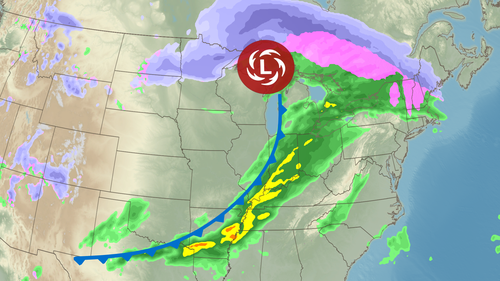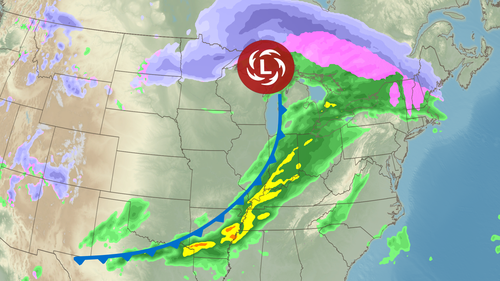Share this @internewscast.com
Unpredictable weather conditions in the central and eastern United States are about to intensify this week, with a potential surge in severe thunderstorms and dangerous flooding threatening tens of millions of residents.
This upcoming weather threat follows closely on the heels of a recent storm system that swept through the central US on Sunday, resulting in seven fatalities, and continued its reach across nearly the entire eastern coast on Monday.
Regions that suffered significant damage from these recent deadly storms—and even from destructive weather last month—may once again find themselves in the path of these violent storms as late as Wednesday evening (Thursday AEDT).

Level 3 of 4 risks of flooding rainfall encompass parts of the Mississippi and Ohio valleys each day from Wednesday through to Saturday, according to the Weather Prediction Centre.
“This is an increasingly significant setup” with the potential for “high impacts and life-threatening flash flooding spanning the course of several days,” the centre warned.
After rain begins Wednesday, each day that follows will see the threat of flooding ramp up. The ground will get increasingly soaked until it becomes unable to absorb more and any rainfall after that point will set off dangerous flash flooding.
Storms will work over the same areas repeatedly and could drop 5cm to 15cm of rain each day – especially from Arkansas to Indiana.

In Pictures: Dozens killed as tornadoes, fires and dust storms rip through US
By Saturday, areas caught repeatedly under the heaviest storms could end up with more than 40cm of rain. The corridor where Arkansas, Missouri, Illinois, Kentucky and Tennessee meet is the most likely place for these extreme totals.
“If we get anywhere near these amounts, a historic flash flooding event is likely,” the National Weather Service in Paducah, Kentucky, warned.
An entire spring’s worth of rain could fall in just four days in the hardest-hit locations. Paducah, for example, averages about 39cm of rain from March to May.
The upcoming heavy rain event isn’t the first period of extreme rainfall this season and likely won’t be the last. Overwhelming rainfall is becoming more frequent in a warming world, as rising global temperatures push weather toward the extremes.
Last week, more than half a year’s worth of rain fell in less than 48 hours and sent parts of South Texas underwater, forcing more than 100 water rescues and leaving four dead.















